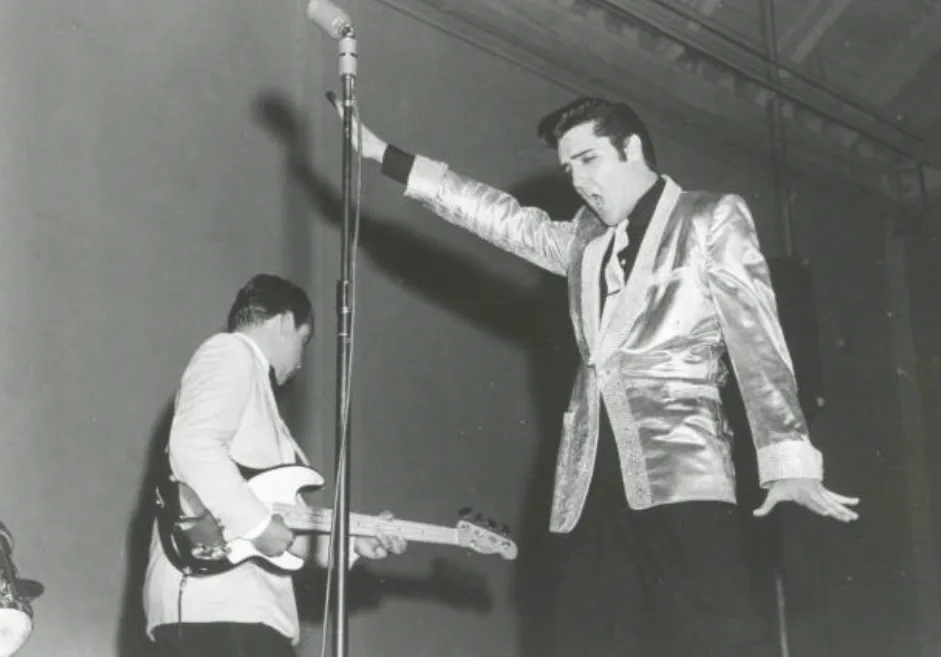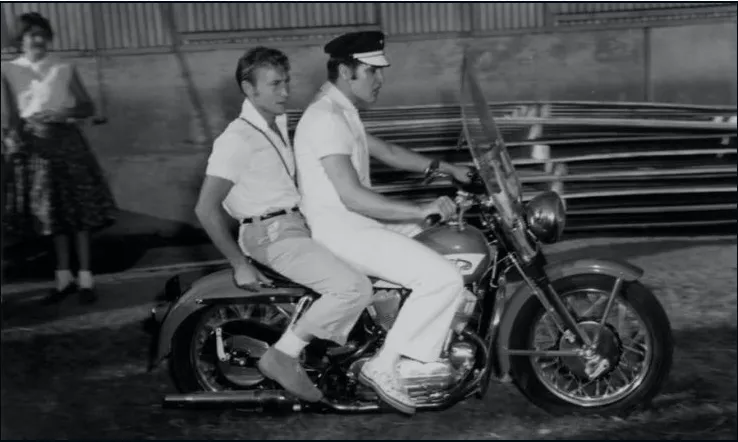On July 31, 1955, the Fort Homer W. Hesterly Armory in Tampa, Florida, bore witness to a momentous event in music history: a performance by Elvis Presley, Scotty Moore, and Bill Black. This concert marked the second appearance of the trio at the Armory, following their tumultuous debut just a few months earlier. Little did they know, this performance would solidify their status as rock 'n' roll icons and set the stage for their meteoric rise to fame.

The journey to this pivotal moment began in May 1955, when Elvis, Scotty, and Bill first graced the stage at the Fort Homer W. Hesterly Armory. Just days before their appearance in Jacksonville, Elvis made a bold declaration to the audience, igniting a frenzy of excitement. His casual invitation to the female fans – "Girls, I'll see you backstage" – sparked pandemonium, with fans rushing the stage and tearing at his clothes and shoes. It was a scene of chaos and adoration that left an indelible impression on Colonel Parker's advance man, Oscar Davis, and convinced Colonel Parker of Elvis's immense potential.

Building on the success of their debut, the trio returned to the Armory on July 31st for their second performance. This time, Colonel Parker had a strategic plan in place. He enlisted the services of local photographer William V. "Red" Robertson to capture the essence of the concert through a series of photographs. One particular image, known as the "Tonsil" photo, would become iconic in Elvis's career.

The "Tonsil" photo captured Elvis mid-performance, his face contorted in a passionate expression as he belted out a song. The intensity of his performance, coupled with the raw energy emanating from the stage, was palpable in the image. It perfectly encapsulated the essence of Elvis's appeal – his electrifying stage presence, his magnetic charisma, and his undeniable talent as a performer.
This photo, in a cropped version, would later be chosen as the cover art for Elvis's debut album, "Elvis Presley," released by RCA in 1956. Its striking imagery and arresting composition immediately caught the attention of fans and critics alike, catapulting Elvis to new heights of fame and popularity.

But the "Tonsil" photo's impact went beyond just album covers. It became a ubiquitous image, plastered across newspapers, magazines, and promotional materials to promote Elvis's future shows. Its widespread use solidified Elvis's image as a cultural icon and helped to fuel the hysteria surrounding his live performances.

Moreover, the "Tonsil" photo became a symbol of Elvis's connection with his fans. In the midst of his electrifying performances, Elvis had a way of making each member of the audience feel seen and appreciated. His genuine charisma and infectious energy endeared him to fans of all ages, races, and backgrounds, forging a bond that would endure for decades to come.
For those who were fortunate enough to witness Elvis, Scotty, and Bill perform at the Fort Homer W. Hesterly Armory on that fateful day in July 1955, it was an experience they would never forget. It was a moment of pure magic – a collision of talent, passion, and excitement that would leave an indelible mark on the history of music.

As Elvis continued to captivate audiences around the world with his electrifying performances, the "Tonsil" photo remained a lasting reminder of his unparalleled talent and enduring legacy. And for fans of the King of Rock 'n' Roll, it serves as a cherished memento of a bygone era – a time when music was king, and Elvis Presley reigned supreme.



